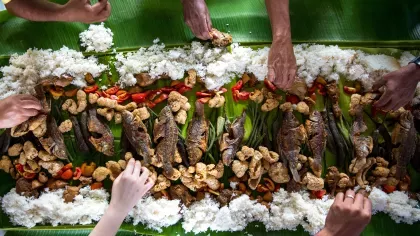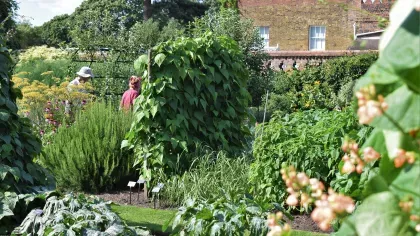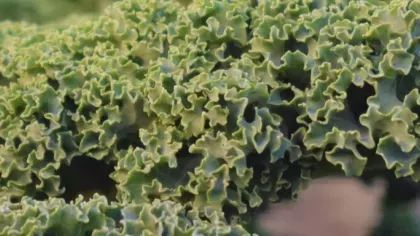25 April 2019
Aubergine: The mad apple
The king of vegetables needs protecting. Kew's team of experts are exploring ways to save this delicious food.

The humble aubergine is one of the most highly produced vegetables in the world.
In fact, it ranks sixth after tomatoes, watermelons, onions, cabbages and cucumbers for total global production, with 46.7 million tons produced in 2011.
First domesticated in India, aubergine (or eggplant) is cultivated worldwide for its fleshy fruits which are enjoyed by millions of people around the world.
There are actually three known cultivated species of aubergine: the Gboma eggplant (Solanum macrocarpon), the Scarlet eggplant (Solanum aethiopicum), and the Brinjal eggplant (Solanum melongena). Of these three species, Solanum melongena is the most widely cultivated aubergine and is grown extensively in South Europe and Asia.
The Latin name melongena has its roots in the Italian name melazane. This derives from the term “mela insane”, which literally means mad apple.
Whilst this species may have the name of a mad apple, aubergine actually belongs to the same family as tomatoes and potatoes, but also the poisonous deadly nightshade.
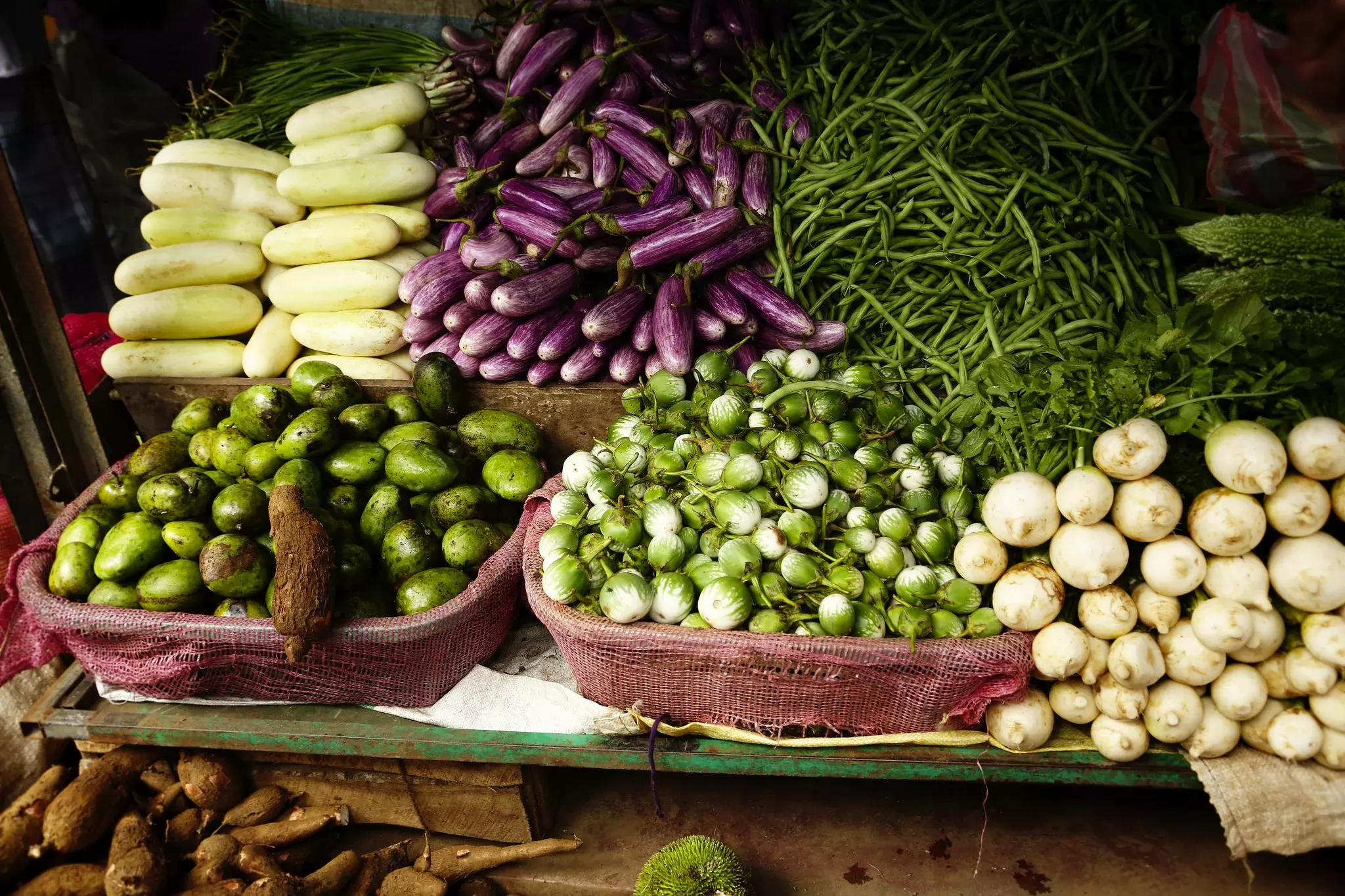
The king's future
In southern India, aubergine is crowned the ‘king of vegetables’ and is a key component to many diets.
Despite having the highest levels of nicotine of all the vegetables, it is also often used for medicinal purposes and is seen as a symbol of protection, female fertility and good health in several countries.
It may be a fundamental part of dinner tables around the world but the aubergine is not a robust vegetable. The plants we buy in our supermarkets are domesticated and do not have the genetic diversity that wild plants have to survive.
Resilience is found in diversity. The lack of diversity in domesticated aubergine has left it vulnerable when it comes to fighting off pest and disease outbreaks and abiotic stresses, such as drought, sea-level rise and extreme weather events.
As each plant is so similar, what kills one plant will likely kill the whole crop.
The helpful cousins
The cultivated aubergine has wild relatives.
Whilst they may not necessarily look or taste the same as their cultivated cousins, they have a much wider genetic diversity and can serve as a genetic back up.
Crop wild relatives often grow in harsh and extreme environments and so they have traits that make them adaptable to stresses.
The wild relatives of aubergine are thought to be particularly resilient to drought and water-logging but are also cold and heat tolerant. Harnessing this genetic potential enables scientists to cultivate a more resilient aubergine plant.
For example, let's look at the flower bud of a backcross Solanum individual. Backcross means crossing a hybrid plant with one of its 'parent' plants, to try and get an offspring plant that has inherited some desirable traits.
It's a good way to introduce the genes and traits of interest from wild species to domesticated crops, and try to build in the tolerance to abiotic stresses and resistance to biotic stresses, like soil diseases.
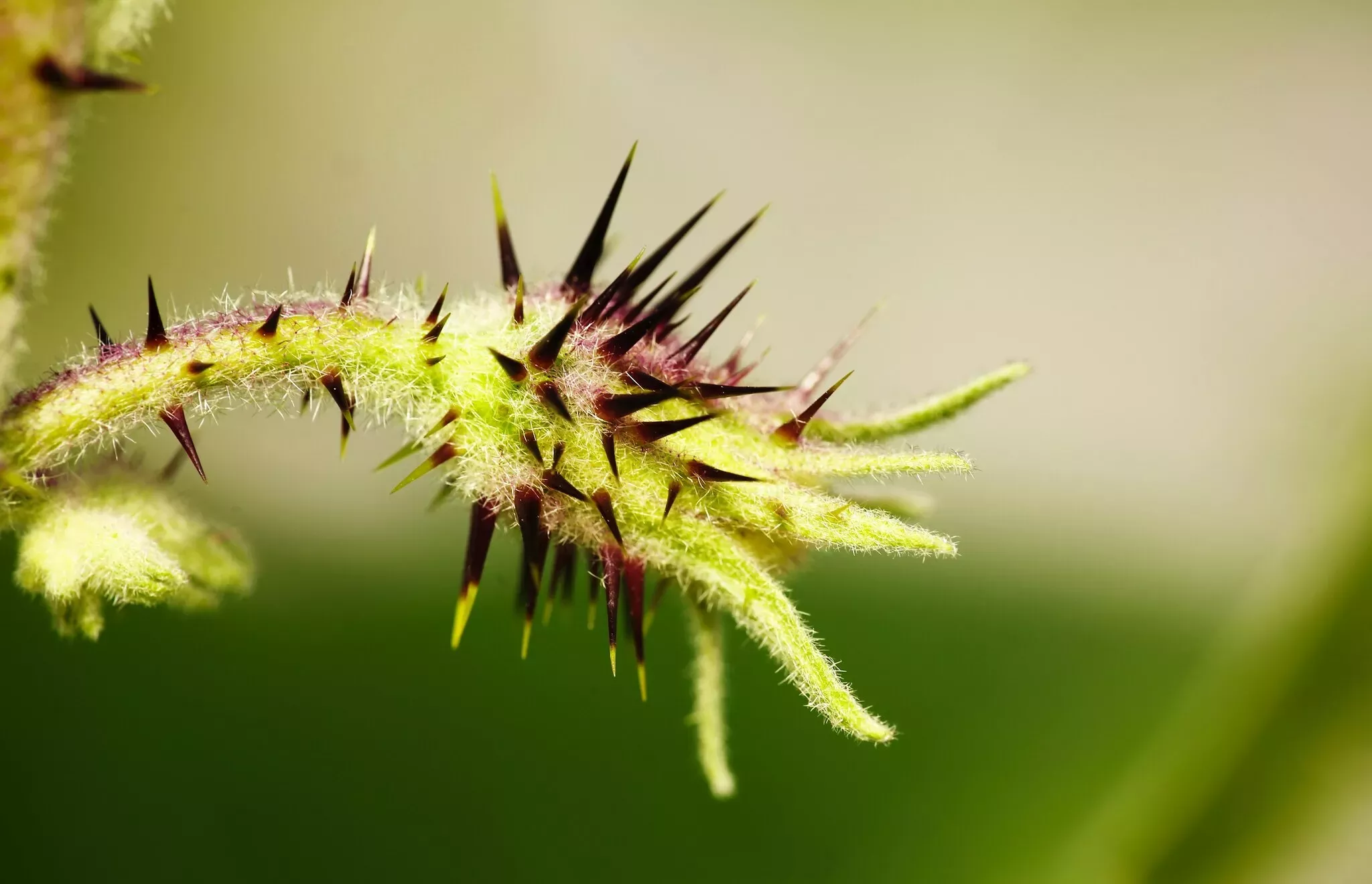
The end of the king?
Unfortunately, this is a race against time.
Many crop wild relatives are listed as threatened species on the IUCN Red List and are in need of conservation themselves.
The cousin to aubergine Solanum ruvu – the rare African spiny aubergine - was collected as part of a general survey in 2000 but by the time it was identified as a new species by Kew botanist, Bat Vorontsova in 2010, its native habitat had been destroyed and the plant is now considered to be extinct.
Kew's work
Alongside the Global Crop Diversity Trust, Kew is working on the project Adapting Agriculture to Climate Change, which aims to collect, protect and prepare the seeds of the wild relatives of aubergine (alongside wild relatives of 28 other cultivated species) so that pre-breeders can make use of the incredible genetic diversity they have. This will help improve the resilience of aubergine and safeguard our future food security.
54 backcrosses from nine different wild species have been obtained by the pre-breeding project, transferring the most important tolerances to drought, improved efficiency in water use and soil diseases.
What's more, we are storing seeds from wild relatives in the Millennium Seed Bank for conservation.
1.4 million Solanum seeds have been banked so far, from 24 species collected in 19 different countries.
On the list are Pakistan, Sudan, Nigeria, Vietnam, Uganda, Malaysia, Ghana, Kenya and Nepal. Working with our partners around the world, we have a chance at protecting this much-loved plant.

